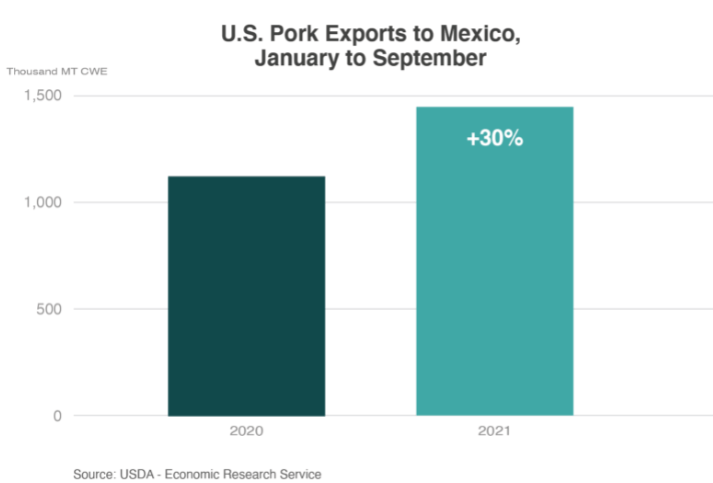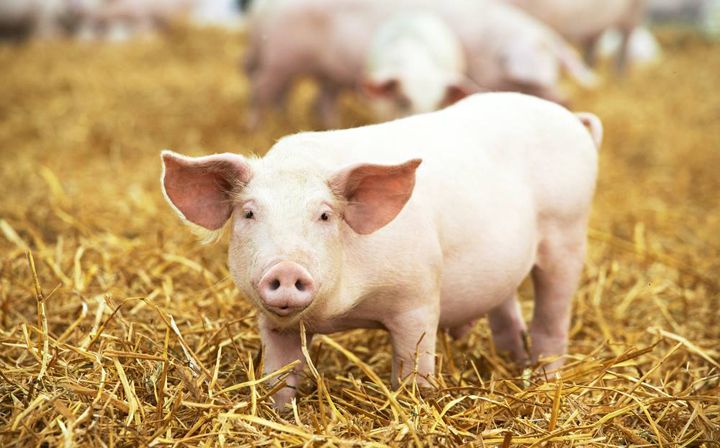Pork exports from the United States to Mexico have reached record levels, noted the Department of Agriculture (USDA).
Mexico is the world’s third-largest pork importer and traditionally the largest US market for pork exports by volume.
But in recent years, US shipments to this important market have faced headwinds. First, the retaliatory tariffs related to the Section 232 actions hurt the American product. Then the coronavirus pandemic and a weak Mexican economy weighed on demand.

With the retaliatory pork tariffs resolved and the economic recovery underway, U.S. pork shipments to Mexico rebounded in 2021 and are expected to improve further next year.
In the second quarter of 2021, Mexico was the top international destination for U.S. pork, with shipments reaching a record high in August and again in September, the USDA reported.
Pork exports
With high Mexican foreign sales and high feed prices keeping production growth subdued, Mexico has sought products in the United States and will likely continue to do so, the USDA projected.
This comes at a critical time for the U.S. pork industry as Chinese demand is expected to remain below record 2020 levels, renewing the emphasis on traditional markets.
Retrospective
In March 2018, the United States announced that tariffs would be imposed on steel and aluminum from several countries, including Mexico, for national security reasons (Section 232).
In response, Mexico imposed retaliatory measures on steel, aluminum, and a variety of agricultural products, including pork.
As of June 2018, U.S. pork exporters faced a 10% tariff in one of its most important markets. This rate rose to 20% in July 2018.
With these actions, the United States once again exported pork to Mexico at most-favored-nation levels, essentially losing the benefits achieved by the North American Free Trade Agreement.
While economic recovery in Mexico has been slow and inflation remains a concern, pent-up consumer demand is expected to support pork consumption in 2021 and, in 2022, should allow U.S. exports to return to the rising trend seen before the pandemic.
![]()

